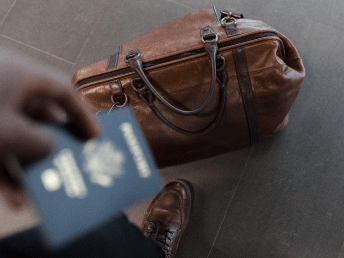The United States monetary patron visa programs and biosecurity


The United States has two essential monetary patron visa programs: the E-2 and EB-5 visas.
- EB-5 Visa green card
- The EB-5 visa program is coordinated by the U.S. Citizenship and Immigration Services USCIS. Productive competitors and their families can apply for a green card.
- The EB-5 visa program anticipates that candidates should contribute someplace in the scope of $900,000 and $1.8 million, depending upon the space of the Residency by Investment , and needs something like 10 obligations to be either made or ensured. There is a yearly cap of 10,000 applications under the EB-5 program. The program is planned to enable new investment in establishment projects, particularly in Targeted Employment Areas TEA with high joblessness. Resources are redirected through associations known as regional centers, as of now allocated basically by the U.S. Part of Homeland Security. An outline of an endeavour is a $200 million improvement by the Pennsylvania Turnpike Commission.
- E-2 non-pariah
- The E-2 monetary patron visa program grants outside nationals of explicit countries to place assets into a startup, buy a business or a foundation to live honestly in the U.S.
- The fundamental visa term vacillates from 90 days to five years depending upon the U.S. correspondence plan with the applicant’s country of citizenship.
- The E-2 visa can be re-energized perpetually and it is useful for the monetary supporter to change their legitimate status to a green card for instance EB-1A, EB-2, EB-3 or EB-5
- The E-2 visa monetary patron should zero in on contributing a critical total all-around $100,000 and make American positions normally 2+. Most investments under $200,000 will require the monetary sponsor to work 40+ hours seven days in the business essentially for the underlying 12 to 18 months.
Biosecurity of US :
Already, quarantine measures were executed by European countries to abbreviate the Bubonic Plague and Cholera. In the British Isles, for example, the Quarantine Act 1710 9 Ann. set up ocean quarantine techniques in a period in which serious limit control estimates all things considered were yet to become standard. The principal exhibition was called for in view of fears that the plague might be imported from Poland and the Baltic states. The second exhibition of 1721 was a direct result of the ordinariness of the plague at Marseille and various spots in Provence, France. It was re-energized in 1733 after one more scene in central area Europe, and again in 1743, due to an epidemic in Messina.
The showing was redesigned in 1801 and 1805, and in 1823–24 a multifaceted solicitation was followed by an exhibition-making quarantine exactly at the caution of the Privy Council, which saw yellow fever or other significantly overpowering contaminations as calling for separation, close to the plague. The risk of cholera in 1831 was the last occasion in England of the usage of segregation restrictions. Cholera affected every country in Europe regardless of all undertakings to keep it out. Exactly when cholera returned to England in 1849, 1853 and 1865–66, no undertaking was made to seal the ports. In 1847 the privy board mentioned all appearances with a specialist’s endorsement from the Black Sea and the Levant to be yielded, given there had been no occurrence of plague during the excursion and sometime later, the demonstration of detachment was suspended.
